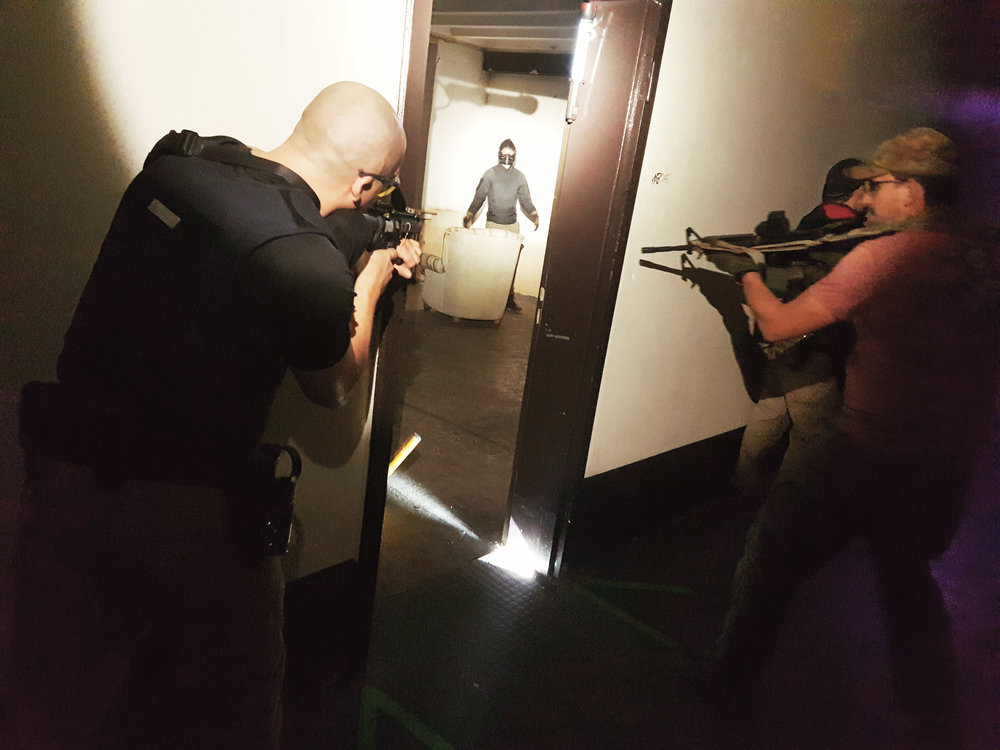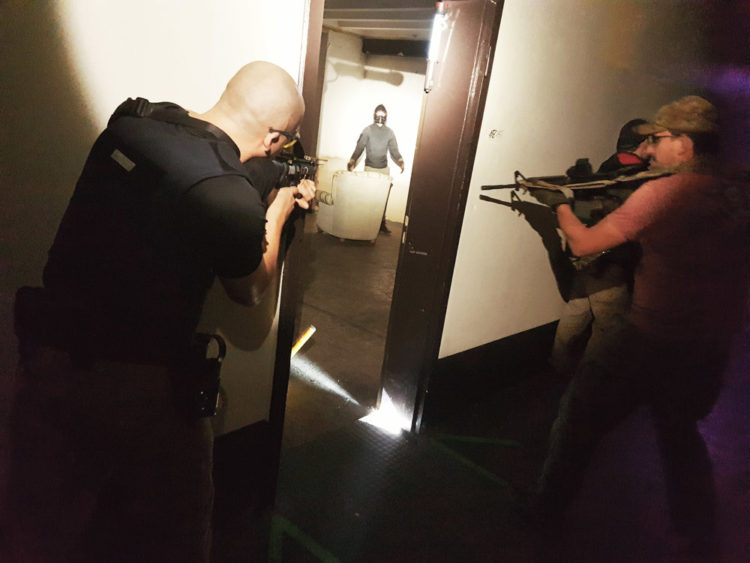The need for speed. Speed has always been a crucial and quite rewarding aspect of our culture, society and the very simple process of determining what is good or bad. In the age of internet and fast food all we need is there. Right here, right now. Fast as a rocket. Simple as walking.
Today a shooter or tactician legitimacy is determined (often subconsciously) via his speed of movement & accuracy. Whether it is who shot the fastest with a beeper or who eliminates and entire CQB kill house in the shortest time and the fastest speed, everything is subject to the final question: How fast are you bro?
The fast and furious mentality, which is largely entertainment driven, penetrated slowly in the recent century into too many tactical concepts. Primarily shooting, combatives and CQB resulting in a complete disregard of many little pieces or micro critical milestones if you will, that are existing in the reality between the moment you perceive a certain visual input to the moment you take a decision. We call it identification, the middle ground between cause and effect.
But first, what is identification in tactical context?
identification – the condition of having the identity (of a person or object) established. It could be a figure (suspect, active threat, bystander) or a device (IED, obstacles,etc..). both have a common ground as they tend to be have strong impact on the progress as well as success of your task.
Now ask yourself. In all this training you put down range, say weapon manipulations or tactics, have you ever involved any kind of target identification principle or even process to it? Probably not. And here is the problem.
Scenario 01 – Low light, home invasion call
- Night, its dark and you respond as an officer to a possible home invasion call. You arrive on sight, door is open, no light, no sound.
- As you approach one of the sleeping rooms, you begin to slice the pie, gradually seeing more of the room. You choose not to use your flashlight.
- Noise, you hear someone moving. Your flashlight goes on. You see a guy with lit up face, black jacket, but he can’t find the right words.
- He holds something. You can´t see what.
Scenario 01 describes a situation where it is dark and you just made an encounter. In most cases every noise movement or shadow might be a resident rather than the intruder himself. You need to see.
You are still not having all required data to identify, and therefore you go “loud” with flashlight on. From that moment, you perceive what appears to be silhouette, an opposing T of shoulders and head and you enter the identification process. This entails profiling, which is driven by the pillars of communication, visual and context. But long story short you are busy in getting fixated slowly into a human interaction with another human.
Based on the context above you need to:
- Verbally communicate while holding a gun & a flashlight
- Interact properly with a flashlight
- Interact properly with both the flashlight AND the gun (manipulation, etc.)
- Perhaps use your radio
- Control non-compliant individual, as they tend to move often, requiring you to adjust your position behind “cover”
- To communicate and further collect important cues for the purpose of identification. (Should I enter or bring this guy to me? Is this a by stander, resident, or a threat?)
- You will need to do all of this while working from cover. In low light conditions.
- Assuming you have a partner who communicates, who pulls security? Or you both fixate on the person?
Let´s assume the suspect appears to perform a distinctive movement that resembles the draw of a handing. Next, you perceive the shape and the shining of a long tubular metal body being draw. At this point (not always) the identification process, comes to a momentary pause, since the target is identified.
Based on the development above now you need to:
- Be able to properly illuminate your target. After all you need to see.
- In case you will experience any weapon malfunction, you’ll need to address it while interacting with a flashlight, that will naturally force you to re identify your target.
- After Fire. What is happening after the threat is down (is it really the threat we just shot? Does he need medical attention? is he may be pulling additional / reaching the gun again?)
Scenario 02 – Identification under stress.
- You and your team are doing a Dynamic multi room clearing
- As you clear one room, you move to the next one and soon another one.
- Stress goes up. Heart beats increases, the gear is less comfortable as it was 10 minutes ago.
- You are the second man. Your point man is just crossing the threshold into the room.
- Simultaneously you hear a brief sporadic fire from a nearby room.
- You follow him as you trained, so you will get the opposing corner clear
- Adrenalin is released. Your heart pumps. Cortisol is released.
- As you enter the room and you get that gun on the corner, from your °45 and in the peripheral view, you recognize a human figure.
Based on this scenario, your skills & tactics coop the most with the following:
- Overriding self-preservation
- Identification and prioritization during movement
- Identification while inside the room (has to do with over commitment)
- Dealing with offset exposures (next door, next Scorner, windows, etc.)
- Ability to conduct all your weapon retention & handling skills in the same time and in a non-deliberate fashion
- Using the flashlight / mean of marking
- Communication
In most of the force on force runs I have witnessed, such constellations do not end up well for many reasons, especially when the eye works under stress and our sympathetic nervous system is activated. So, we are left with the question:” Why would you enter that room in first place?”
Scenario 02
This is an example from a firsthand experience. It describes a group of people who are required due to the nature of their tactics to speed things up and over commit based on what they learned, for example conducting dump entries rather than slice, etc. By doing so, non-intentionally this individual throwing themselves into the impossible, resulting in their tactics which are relative irrelevant or in other cases simply ineffective in the terms of identification of target, which is largely context driven to some extent. After all, you need to see and understand what you are shooting at, to some degree.
SUMMARY.
Learning how to land or take off will not make you a pilot. Those are merely two milestones that represent a familiar logical start and end phases as sight alignment and trigger press. Instead, a pilot must be trained to identify certain conditions, patterns, malfunctions and maneuvers that could be applicable during X or Y cases. While it is just an example, in the world of violent encounters (assuming you are on the good side), you will be required to do more than just take off and land your bullets on any runaway. Next time you visit the range, don’t just shot and move cool while puking 100 bullets at your target. Instead, shoot contextually, in a way that requires you to identify targets via visual or auditory inputs. Than see how your skills and techniques coop.
Learn more about our friend Eli and Project Gecko:
Project Gecko is a company which specializes in the field of Tactical Training & consultant services. Their capabilities ranges from setting up Tactical courses & projects to consultant services. During their courses Gecko instructors give their participants the mental and physical tools for their personal success.
They offer a wide spectrum of programs that take place in one day classes, three-days-seminars, and events up to one week. All those programs are based and created on their knowledge which they unpack and repack in a way that will suit every participant. For Gecko the gear is just a tool and the will is the key. Gecko believes that every person who has the will, will find his place in their seminars and workshops.
The instructors behind Project Gecko are all former military personal with extended training’s and combat experience. Eliran founder of Project Gecko was born in Israel. Before he moved to Germany he served in the IDF in one of the SF units.
Find out more about Project Gecko


